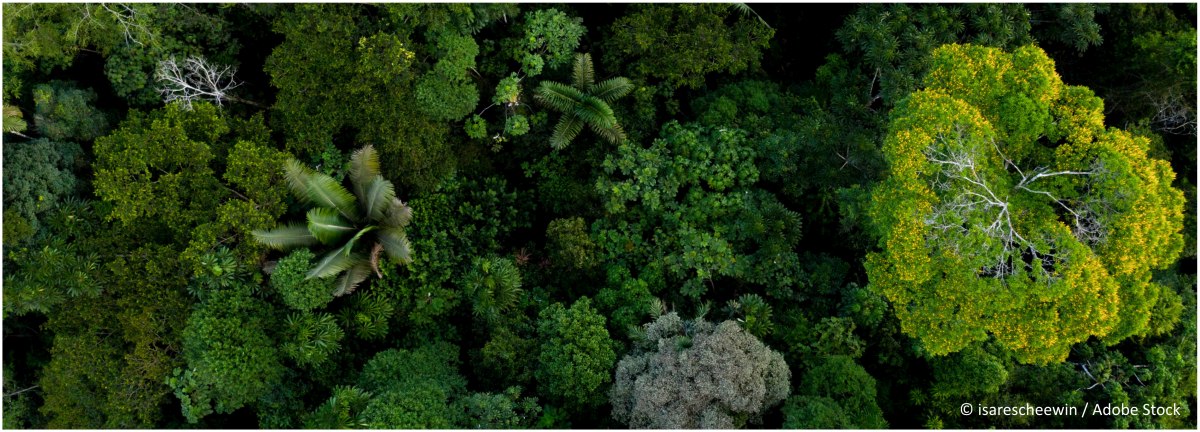STAGE OF INVESTMENT
PERFORMANCE
This section focuses on the operational considerations of pre-requisites, measurement and claims, that particularly apply for achieving landscape or jurisdictional scale performance outcomes.
Pre-requisites
Five criteria determine what constitutes a landscape investment or action and as such are also pre-requisites for achieving landscape or jurisdictional performance outcome.
Two criteria for company investments or actions need to be in place for them to qualify as contributing to landscape or jurisdictional performance. These criteria establish the minimal steps to ensure the necessary relevance, scale and measurability of investments.
- Landscape investments and actions address critical sustainability issues in the landscape and contribute to agreed landscape goals.
- Landscape investments and actions aim to have impacts beyond individual supply chains.
- Landscape investments and actions include support to multi-stakeholder landscape coordination processes.
- Landscape investments and actions are embedded in collective action plans, ensuring complementarity with other activities and interventions in the landscape.
- Landscape investments and actions contribute to broader systems level change, helping to create the enabling conditions for achieving agreed landscape goals.
Three further criteria compound the benefits of landscape investments and actions by aligning and embedding them with other processes, programmes and actors in a given landscape. The degree to which these criteria can be fulfilled is highly dependent on the local context, but they should be prioritized where and when possible:
More information on each of the criteria can be found in the position paper on “What constitutes a company landscape investment or action”.

Measurement
The goal of all landscape monitoring systems is to have good quality, consistent, validated data about actions taken and landscape-scale performance change over time. Monitoring is a shared responsibility that engages companies, local governments and other stakeholders and is an integral part of any landscape investment. Companies that invest in landscape initiatives have the following monitoring responsibilities, with some particularly relevant at the performance stage of a company’s landscape investment (with the remaining aspects assumed to already be in place from earlier stages):
Relationships between landscape monitoring system elements
Claims
A company can make different types of performance claims depending on how much ownership and responsibility they have for the outcome:
- Collective claim: ‘we are part of a collective effort that contributed to this landscape performance outcome’. This is the most broadly applicable type of claim because it recognises that performance outcomes at a landscape scale are a product of the collective efforts of all landscape stakeholders. The benefit of collective claims is that they enable companies to make claims about the collective landscape-scale performance outcomes. Collective claims can be used in any qualitative reporting or collective quantitative reporting (e.g., we contributed to this overall performance outcome), but do not enable stakeholders to claim individual ownership of specific outcomes.
- Proportional claim: ‘we are claiming this part of the landscape performance outcome’. This enables performance outcomes to be apportioned between stakeholders that contributed to the outcome and gives contributors proportional ownership of the outcomes. Proportional claims are necessary where double counting of the outcomes would not be credible, such as for quantitative reporting against individual commitments or for company reporting and disclosure of individual contribution to landscape performance outcomes. Making proportional claims should be carefully considered so as to not overstate the role of an individual organisation.
- Attribution claim: ‘we are responsible for this project-level outcome in line with shared landscape goals’. This means that performance outcomes resulted directly and solely from a set of defined actions or investments made by the company and enables that company to claim responsibility for specific outcomes. Making an attribution claim requires the highest degree of causality, quantitative accuracy and rigour because it results in the right of sole ownership of an outcome. As such, attribution claims are not suitable for landscape-scale outcomes. One exception is high quality jurisdictional-scale REDD+ credits, where attribution is based on accepted allocation methodologies.
How do companies make these claims?
Decision tree to determine which type of claim is most appropriate for the context.
Supporting links:
-
More information on each of the criteria can be found in the position paper on “What constitutes a company landscape investment or action”.
• WWF'sNature-based Solutions Origination Platform: Deliver landscape-scale impact by funding NbS interventions nested within multi-stakeholder landscape strategies. The platform connects corporate and public sector funders to support a full suite of interventions to secure benefits for people, nature, and climate in select priority conservation geographies. Metrics tailored to each landscape support funders in making credible impact claims tied to their funding.
-
More information on each of the criteria can be found in the position paper on “What constitutes a company landscape investment or action”.
• LandScale Framework: LandScale enables organisations to conduct validated baseline assessments and reassessments, that help to understand the change in monitored indicators over time and the impact achieved.
Please note the supporting tools and resources were developed by different organisations or collaborations and are not collectively endorsed by the organisations participating in this roadmap.